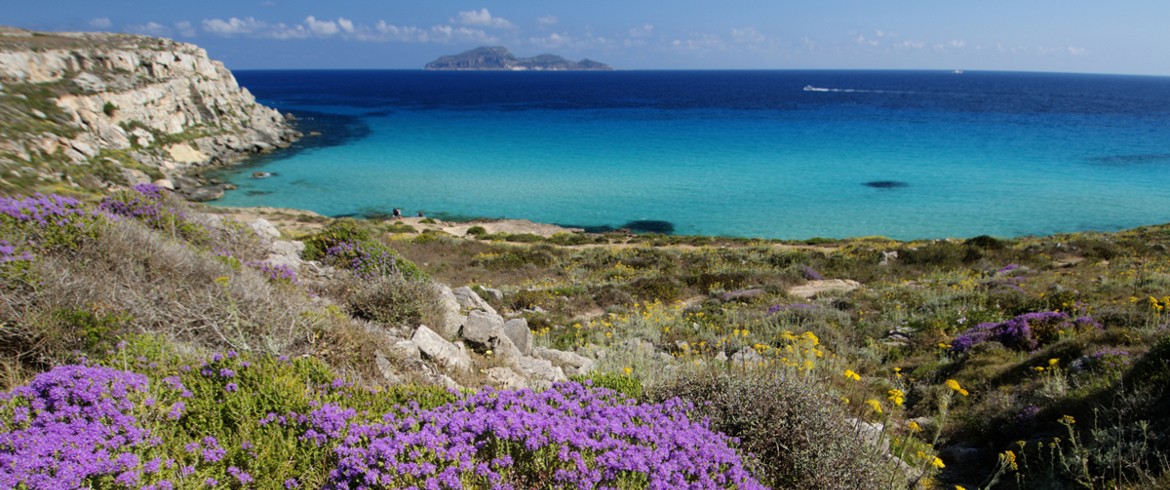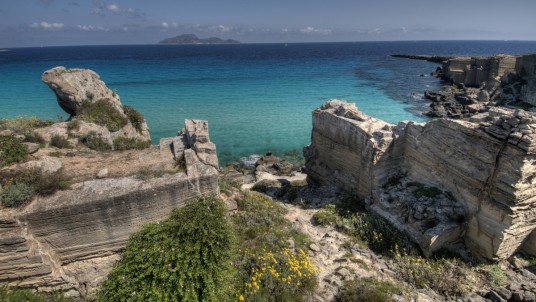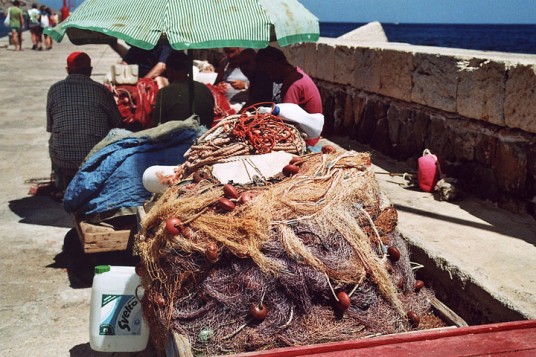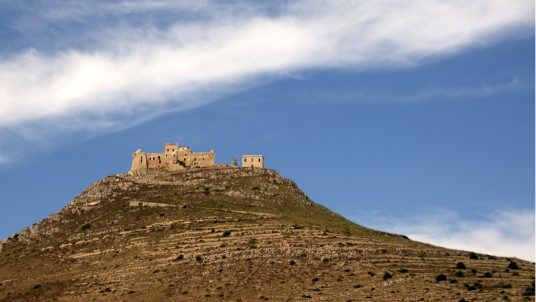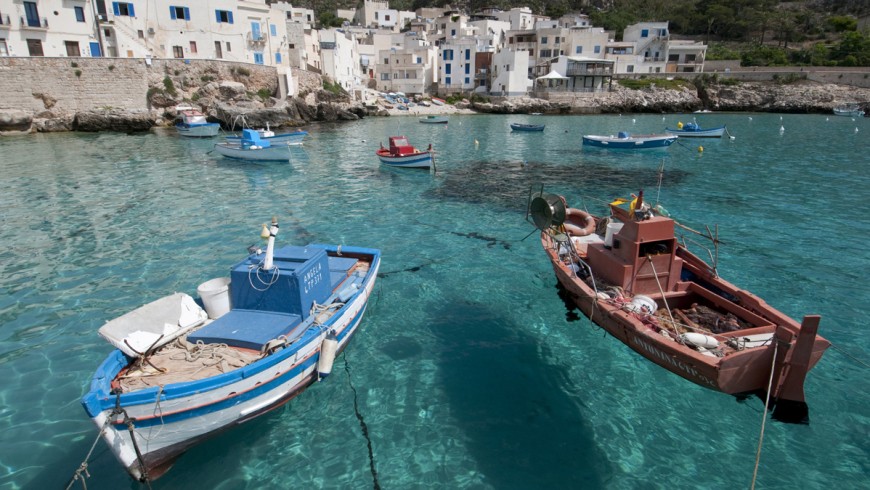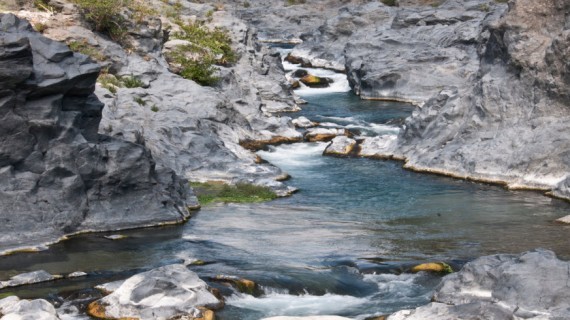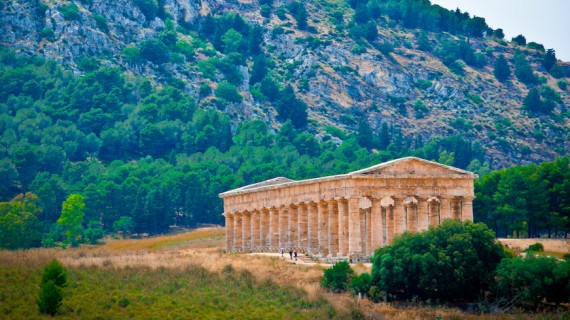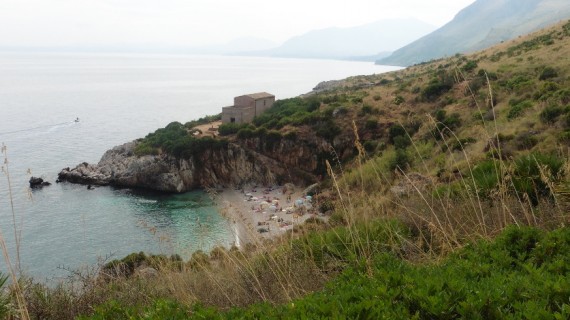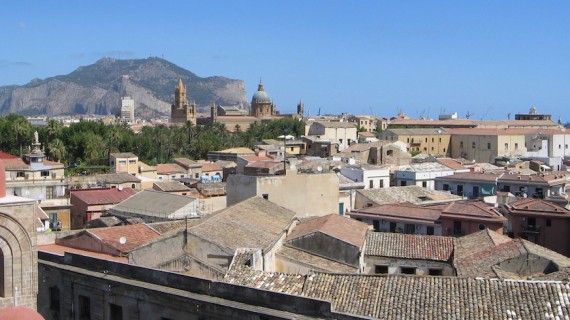It is amazing to realize that an island doesn’t have bridges, but it can be itself a bridge, over history. This is the case of the Egadi islands, small pearls set in the sea close to Trapani, in Sicily. The main characters of this trip are Favignana, Levanzo, and Marettimo which are the Marine Nature Reserve largest in the Mediterranean.
Favignana
We start from the largest whose shape looks like a butterfly on the sea: Favignana, whose name comes from the wind that blew across, the Favone.
The first surprise about this place is the light. Everything reflects light, from the shining water, and the white rocks of the coast to the buildings that stand on the island proudly with in their soft colors and silently invite the visitors to discover them.
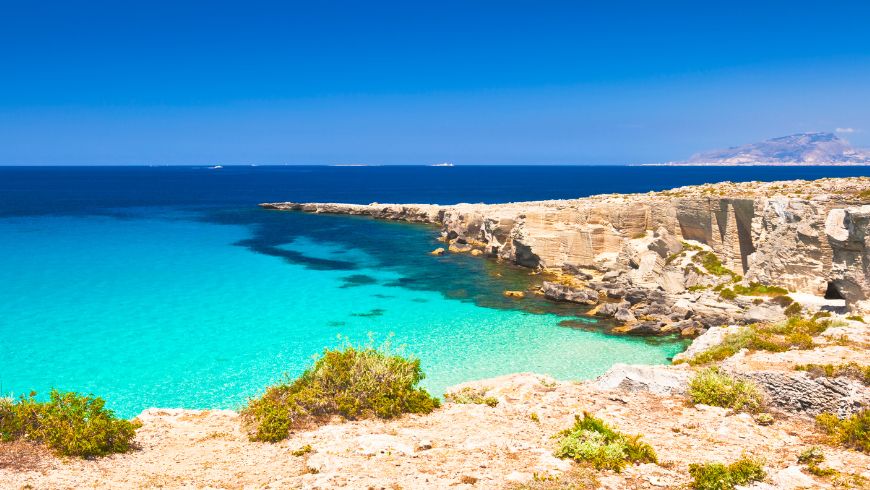
So we start: first we visited the Tonnara Florio, an establishment for fishing that the family Florio bought in the mid-1800s, and that made this island one of the most important commercial points of the Mediterranean for the production of tuna. Today the establishment hosts an archaeological museum that shows to visitors the traditional fishing techniques and the history of this industry.
Continuing our journey through history and natural beauty, walking to the top of Mount St. Catherine, where, at an altitude of 310 meters above sea level, is the fort of the Normans. On the top of the towers, you can see all around the island and the profiles of her sisters Levanzo and Marettimo. The view of the sea increases the desire to admire it more closely, hear and breathe the sea, and what better point of Cala Rossa? Approaching the coast towards the sea the white rock turns into fine sand until we reached the blue water.
- Favignana of Roberto via Flickr
- Fishermen of the Egadi Island of Luca Moglia via Flickr
- Fort of Favignana fo Roberto via Flickr
From here you can visit the caves of the island, evidence of ancient prehistoric peoples who used them as natural homes. Cala Rossa was also one of the points where the ships were loaded by the tuff extracted from the quarries because it was the second most important commercial activity of the island. The extraction of the tuff has created beautiful natural museums shaping land in high pinnacles and beautiful caves. Heading towards the island centre you can not stop and admire the square of Madrice overlooked by the main Church established in honor of Maria Immacolata. Here beats the heart of the island especially in the summer entertaining visitors with shows and evening concerts. After spending a day walking between nature and history, we wanted to relax in the soft arms of a bed. There are two possibilities for those in search of comfort with attention to the environment.
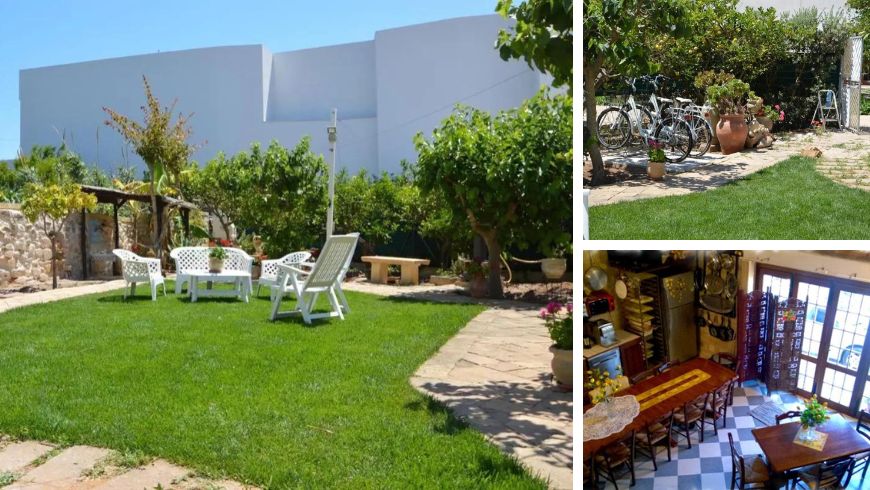
At the b&b Al Giardino dei Limoni Giovanni e Costantino welcome you into their beautiful eco-sustainable structure overlooking, as in a seventeenth-century affresco, on a large lemon garden. The b&b which is only 700 meters from Punta San Nicola, with its beautiful clear waters, offers to the guests their typical products that will make your stay delightful.
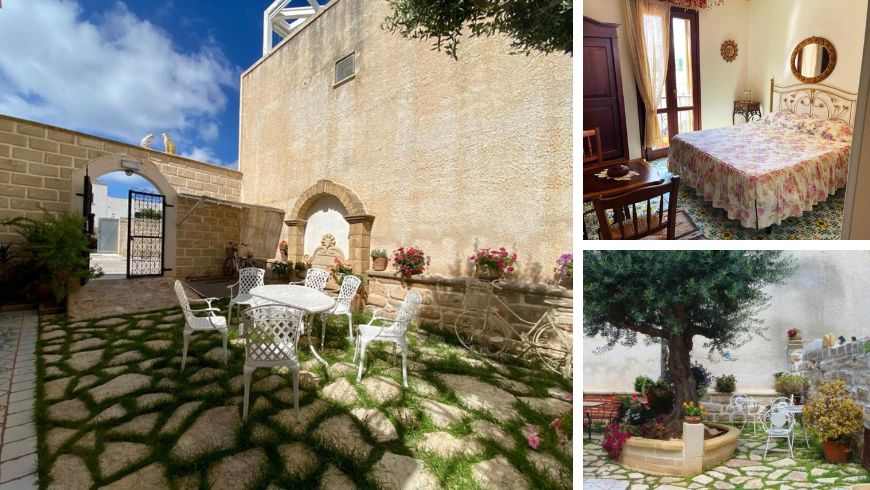
You can sleep also at b&b Al Gattopardo located in the heart of Favignana, so it is perfect to move and reach all the best of the island. The eco-friendly reflects the character of Favignana, with plenty of light, authentic colors, and a pleasing atmosphere in which you can breathe the perfume of plants and flowers. The organic breakfast, with local products such as sweet figs, can be enjoyed in the garden and it gives you the right energy to continue the discovery of Marettimo.
Marettimo
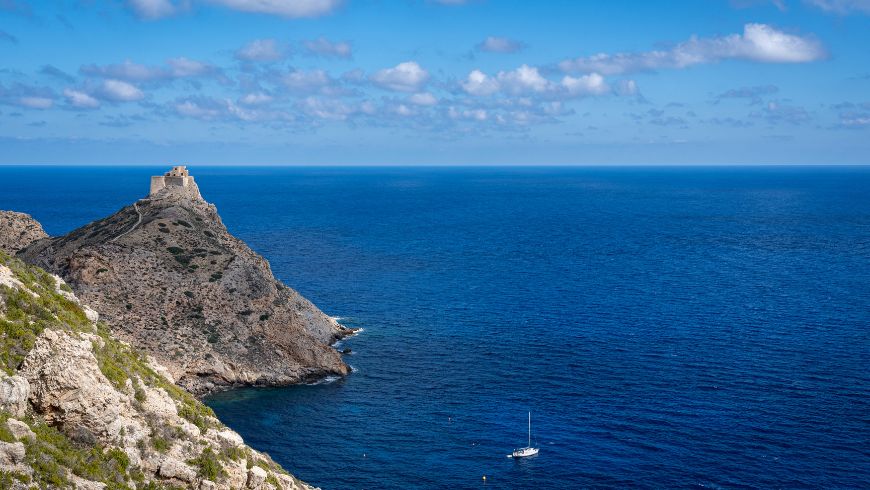
Marettimo, the farthest from the coast, is dominated by Mount Falcone which is 686 meters. It is an explosion of beauty, and in front of this view, we did not doubt that it could be the famous Ithaca home of Ulysses, as claimed by someone.
The suggestion is to visit it with local fishermen who offer beautiful boat tours to admire the coast around.
Very interesting is the visit to Case Romane, another evidence of the historical value of this island.
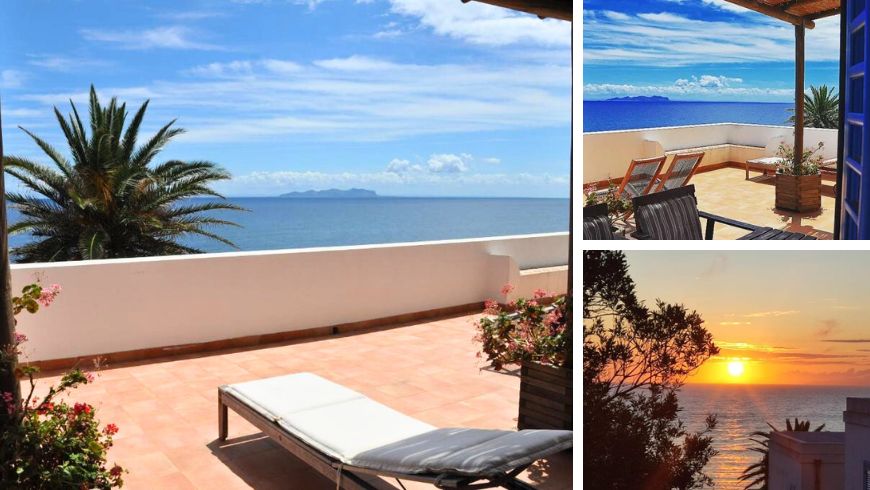
After a day of hiking and trekking on the island, Marettimo Eco-Residence is the perfect place to continue admiring the blue of the sea in total relaxation. This eco-sustainable residence, which harnesses the sun to heat water and utilizes bioarchitecture to minimize energy waste, is surrounded by olive trees. From the comfortable wooden staircase, you can descend directly to the beach and immerse yourself in the crystal-clear waters of the sea. Pure magic!
Levanzo
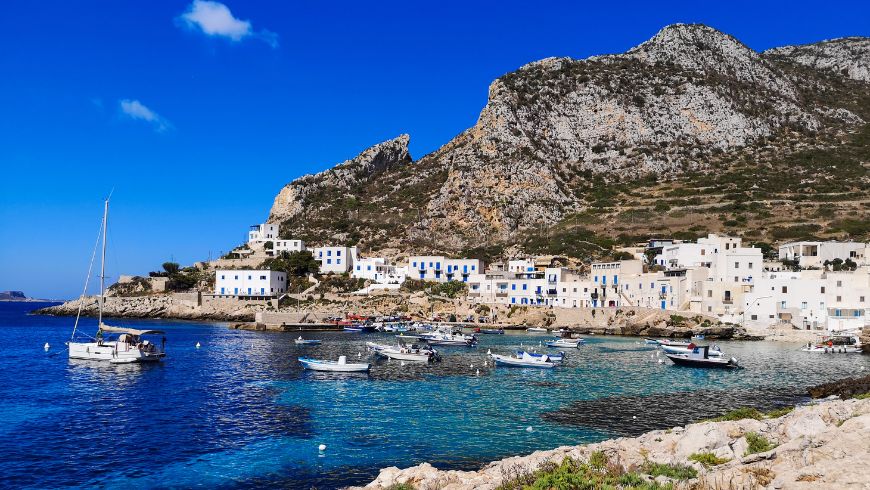
Finally, the smallest of the sisters, the wild Levanzo thanks to a limited human settlement preserves all the natural beauty, as well as 400 endemic plant species. The human presence in this place is restricted to a small traditional village that you can achieve with a single country road that runs along the island. In this place, the white rocks amplify the light and seem to light up the path to the caves. The most famous, the Genovese cave, discovered accidentally in 1950 by a Tuscan painter, has on its walls art signs of 6000-7000 A.C.
Traveling to the Egadi means not only enjoying perfumes, colors, and authentic food but also diving into the sea of history.
